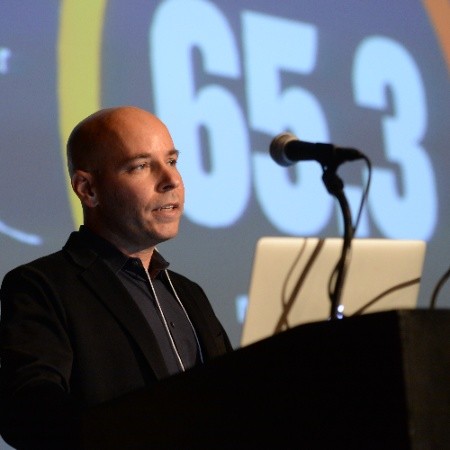I have a feeling the White House was one of the places where A123 Systems’ announcement on its new battery technology this week received the most enthusiastic response. After all, the last thing the Obama administration needs right now is another Solyndra and A123, which was awarded $249 million in federal stimulus grants to produce batteries, wasn’t (and might still not be) too far from becoming one.
The announcement came just two weeks after A123 warned that it may not be able to stay in business unless it will be able to secure more financing. While funding remains an issue, the troubled battery maker at least has now something that might be the light at the end of the tunnel. Its name is Nanophosphate EXT.
Behind this unsexy name hides a new lithium ion battery technology capable of operating at extreme temperatures without requiring thermal management, significantly reducing or eliminating the need for heating or cooling systems. According to the company, the new technology will generate high power, a long cycle life, increased usable energy and excellent safety as compared to other available battery technologies. For example, cells built with A123's Nanophosphate EXT are expected to be capable of retaining more than 90 percent of initial capacity after 2,000 full charge-discharge cycles at 45 degrees Celsius. In addition, A123 expects it will deliver a 20 percent increase in power at temperatures as low as minus 30 degrees Celsius.
What does it mean? Well, first A123 will be able to create more powerful batteries for both hybrid and plug-in electric cars, so they’ll be able to pack them with fewer batteries. The result should be lighter and more efficient cars. The new technology is also supposed to improve the fuel efficiency of these cars by increasing the current limited range of temperatures in which they provide optimal results (for example, right now the Nissan Leaf provides the best mileage when the ambient temperature is between 68-72 degrees Fahrenheit). Last but not least, the life cycle of the batteries will be significantly increased – according to the company it will be 2-3x the cycle life of lithium ion competitors. This is again another potential savings for the drivers.
Still, with all the advantages for electric cars, the name of the game here is diversification. One of the reasons A123 has so much hope for the new technology is that it has promising applications in markets other than the electric car market, including telecommunications and the emerging micro hybrid vehicle segment. A big part of the company’s financial troubles has been attributed to its exclusive focus on the electric car market, which has failed to grow significantly yet. “It’s been softer than what we and everyone else expected,” David Vieau, chief executive of A123 told the New York Times.
Vieau is right. Remember President Obama’s prediction of million electric cars on the road by 2015 or GM’s hopes to sell 60,000 Volts in 2012? If anything, with less than 10,000 electric cars sold in the U.S. this year, we’ll probably see 60,000 electric cars in total on the road by 2015. But while President Obama can focus on other green challenges and GM can recalibrate its manufacturing efforts, A123 is feeling the heat, with a reported a loss of $125 million in the first quarter of this year, and a dire need for more cash to stay in business.
The company, which currently makes batteries for Fisker Karma, the BMW hybrid 3- and 5-Series cars and GM's upcoming all-electric Chevy Spark, hopes not only to diversify its product line and increase its profit margins with the savings from the new technology, but also to regain its status as a company that manufactures quality batteries. Its reputation was badly hurt after it had to recall batteries installed in the Karma in December 2011 (potential for fire-starting coolant leaks) and later on in March 2012 when a Karma owned by Consumer Reports died during testing. These recalls also cost it more than $50 million and added to its financial problems.
The most urgent question right now for A123 is not as much about reputation or even about new markets, but about its ability to raise cash in the short term. And a lot of it. Stifel Nicolaus analyst Jeff Osborne told Reuters the company will need to raise an additional $75 million by the fourth quarter of 2012 and another $200 million in 2013 to fund its ongoing operations. According to another analyst, Theodore O'Neill of Wunderlich Securities, the figure is even higher - “according to our analysis it will need $400 million more than it's got to make it through the next 18 months, and even then it would not be enough," he wrote.
Will the company succeed in convincing investors and the markets (it has been publicly traded since 2009) that it has the capability to reinvent itself and do it in time? It’s difficult to say, but it seems that this is now a live or die moment for the company – either it will evolve into a success story or decline into insolvency, becoming another you know who.
Raz Godelnik is the co-founder of Eco-Libris, a green company working to green up the book industry in the digital age. He is an adjunct faculty at the University of Delaware’s Department of Business Administration, CUNY and the New School, teaching courses in green business and new product development.

Raz Godelnik is an Assistant Professor and the Co-Director of the MS in Strategic Design & Management program at Parsons School of Design in New York. Currently, his research projects focus on the impact of the sharing economy on traditional business, the sharing economy and cities’ resilience, the future of design thinking, and the integration of sustainability into Millennials’ lifestyles. Raz is the co-founder of two green startups – Hemper Jeans and Eco-Libris and holds an MBA from Tel Aviv University.














